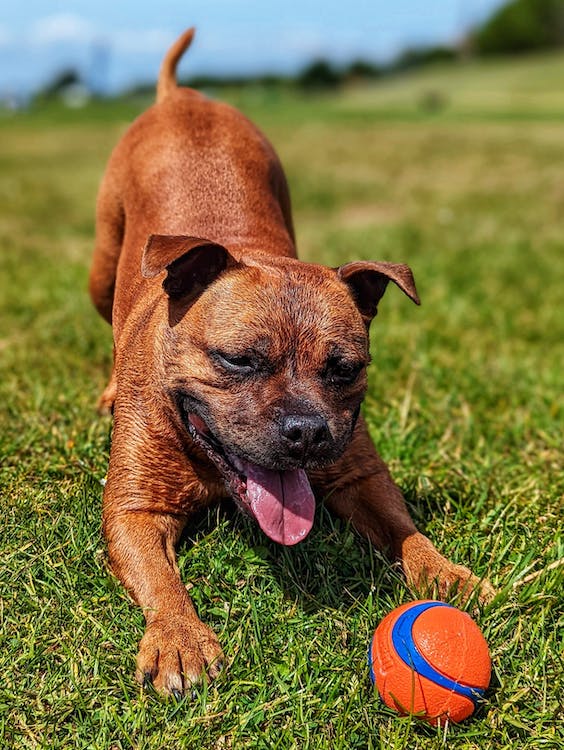If you’re looking for a dog with a unique appearance, the Bull Terrier is a breed you might want to consider. It is a well-known breed for its egg-shaped head and playful nature. Some people may find it uncommon, but this breed is sure to give any dog lover entertainment and affection.
Besides its playful nature, the Bull Terrier is also incredibly strong and agile, as expected of its muscular body. This feature makes this dog an excellent companion for indoor and outdoor activities. That is why it is best to give proper training to Bull Terriers for them to work at their best.
The Bull Terrier is a genuinely lovable dog that is a mixture of power, agility, eagerness, and energy, along with a playful nature. These endearing characteristics of the Bull Terrier are what make this dog adored by many dog lovers around the globe.
Origins of the Bull Terrier
Bull Terriers are closely related to Bulldogs, which wecan trace back the origins to hundreds of years ago – particularly during the 13th century. During this time, the Bulldog was a popular breed because of its significant participation in blood sports – mainly in bull-baiting. This gruesome sport was a regular event during the Middle Ages, wherein the Bulldog fought as ferocious gladiators against a bull. During this event, people would place their bets – speculating on the outcome. However, whichever animal stands triumphant, it is no doubt that they suffered a horrible time in such appalling events.
Thankfully, the mid 19th century became a more favorable period for the Bulldog since authorities outlawed these blood sports with animals. Lawmakers succeeded in stopping the mainstream blood sport; however, they didn’t stop those who still practice such gruesome activities underground. People in different places continued to participate in these morbid events for self-satisfaction and earned money from placing bets. However, since it is not simple to conduct bull-baiting underground, people channeled their attention to dogfighting; wherein dogs fought as ferocious gladiators against each other.
However, the Bulldog was unable to catch up with the sudden change of activities and was not fast enough for this gruesome activity. This downside led to the cross-breeding of Bulldogs and Terriers. It aimed to produce a dog with a power similar to Bulldogs and agile and strong-willed as Terriers. This process produced various breeds, which include the Bull Terrier.
It didn’t take long for authorities to learn about this illegal activity, which ended up banning it in Britain. Since dogfighting was the home of Bull Terriers, banning it left these dogs unemployed. Thankfully, many people took an interest in the Bull Terrier – making it their companion. This recognition led to the development of the Bull Terrier’s appearance and temperament, making it playful and affectionate.
Characteristics of the Bull Terrier
Height: 21 – 22 inches
Weight: 50 – 70 pounds
Life Expectancy: 12 – 13 years
Hypoallergenic: No
Bull Terriers are muscular dogs that could stand up to twenty-two inches tall and weighs up to seventy pounds. Its athletic body defines power and agility, which is perfect for various activities. Besides its strong body, the Bull Terrier is known for its iconic ‘egghead,’ along with pointed ears and small eyes. It has a short coat that usually comes with the color white and any other color.
Moreover, an excellent physique is not the only interesting feature of the Bull Terrier. They also have a playful and charming nature, which is why they are great family pets. They have a remarkable devotion towards their family, even with children, and have the energy to cope up with most any outdoor activities.
Caring for the Bull Terrier
They can work well with high-quality dog food, but homemade meals are also acceptable, provided that your local vet approves them. One thing to take note of when feeding Bull Terriers is that they require natural calcium to support bone development – especially when they are still young.Since they are athletic and active dogs, it is best to give them treats to aid in training. However, always be cautious of the amount of food and treats you feed them to avoid obesity. Overfeeding could cause not just obesity, but also various medical conditions if not handled properly.

